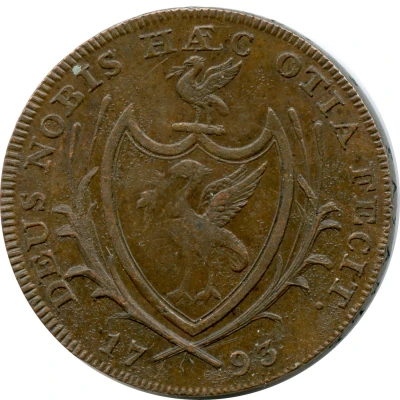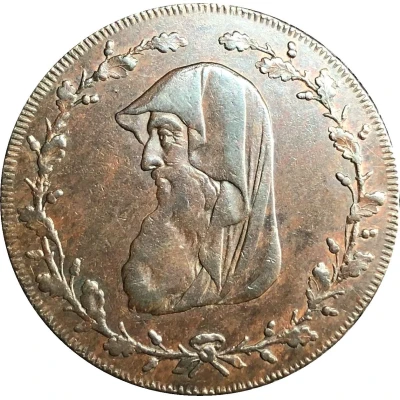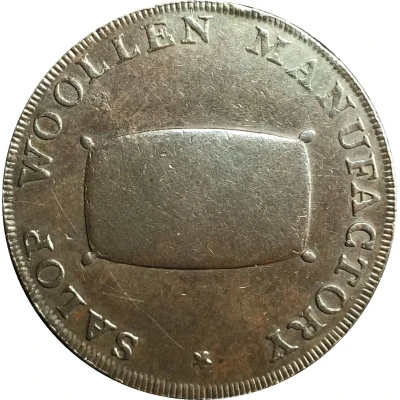


© BasicPS (CC BY)
½ Penny Lancashire - Manchester / I. Fielding
1793 year| Copper | 7.95 g | 28.62 mm |
| Issuer | United Kingdom (United Kingdom, British Overseas Territories and Crown Dependencies) |
|---|---|
| King | George III (1760-1820) |
| Type | Token |
| Year | 1793 |
| Value | ½ Penny (1⁄480) |
| Currency | Conder tokens (1787-1797) |
| Composition | Copper |
| Weight | 7.95 g |
| Diameter | 28.62 mm |
| Thickness | 1.56 mm |
| Shape | Round |
| Technique | Milled |
| Orientation | Coin alignment ↑↓ |
| Demonetized | Yes |
| Updated | 2024-10-09 |
| Numista | N#54059 |
|---|---|
| Rarity index | 74% |
Reverse
East India Company's bale mark, legend around.
Note: the centre point of shield nearly clear of V
Script: Latin
Lettering:
PAYABLE AT IN.o FIELDINGS GROCER & TEA DEALER
4
V
E I
C
Edge
Plain
Comment
PAYABLE AT IN.o (small 'o' is superscript)Interesting fact
One interesting fact about the Token ½ Penny (Lancashire - Manchester / I. Fielding) 1793 from United Kingdom is that it was issued during a time of severe currency shortages in the late 18th century. The coin was minted by a private individual, I. Fielding, in Manchester, Lancashire, and was intended to serve as a substitute for the official copper coins that were in short supply. The coin's design features a simple layout with the denomination "1/2P" on one side and a crown on the other. Despite its humble appearance, the Token ½ Penny is a valuable collector's item today, with some examples selling for thousands of pounds.



